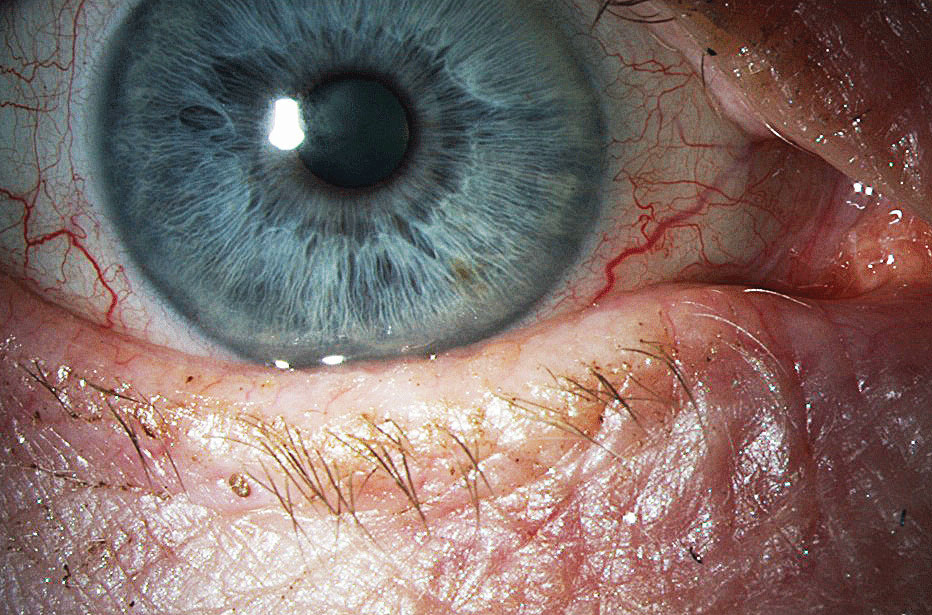 |
| Excess keratin protein in the meibum can lead to MGD. Photo: Gregory Moore, OD. Click image to enlarge. |
Meibomian gland dysfunction (MGD) treatments range from home remedies such as warm compresses to more intense in-office procedures that expel stagnant lipids in the gland’s canal. Looking into new treatments for this condition, a recent study suggests selenium sulfide, a common dermatological therapy, may be effective in targeting aberrant keratins and their subsequent plaque buildup in the meibum.
Since keratolytic agents used in dermatology work to soften, separate and cause peeling of the cornified epithelium, this approach could also successfully treat MGD, as excess keratin has been shown to play a role in the condition, the investigators explained.
Incorporating as little as 10% additional keratin protein into the meibum can increase its surface pressure, making it more rigid and subject to fracture.1 In addition, this raises the melting point of meibum so that it solidifies at body temperature and contributes to increased meibum, the authors said.
In dermatology, selenium sulfide is a potent keratolytic agent that decreases the differentiation of epidermal cells and minimizes corneocyte production by slowing the development of keratinocytes, according to the study.
While keratin proteins have been thought to play a role in MGD, their exact role has largely been ignored and understudied, the researchers suggested.
“Abnormal keratinization of the gland orifice, central ducts and within the meibum of the meibomian glands may all be important drivers of MGD. Similar to dermatological disorders such as acne, MGD may start with retention hyperkeratosis, altered meibum flow and then formation of a plug,” the authors wrote in their paper.
Selenium Sulfide Shows Promise in Eye Disorders
The current study cited a few other investigations that touted selenium sulfide’s benefits in MGD treatment. Some early papers showed that selenium sulfide applied to the lid margin may be a successful treatment for seborrheic blepharitis.2-5
Additionally, a phase 2a multicenter, double-masked controlled trial of AZR-MD-001 (Azura Ophthalmics, Tel Aviv, Israel) looked at sequentially increasing concentrations (0.1%, 0.5%, 1%) or vehicle of the ophthalmic ointment dosed twice weekly for up to three months in patients with mild to moderate MGD.6 Both the 0.5% and the 1% treatments showed significant improvement in the signs and symptoms of MGD compared with the vehicle at three months.6
This dosing trial was followed by a study of 0.5% AZR-MD-001 ointment in patients with MGD and a study of 1.0% AZR-MD-001 ointment in symptomatic contact lens wearers.7,8 In both, the selenium sulfide-containing ointment was found to restore gland function and improve eye dryness. In the study of symptomatic contact lens wearers, the ointment improved symptoms such as fluctuating vision and increased comfortable wear time, all without causing serious adverse events.
Looking Ahead
Much is still to be learned about MGD, including the influence of keratin in meibum and the gland structure, as well as the causes of hyperkeratinization, the researchers explained. Greater understanding of the role of hyperkeratinization in MGD and selenium sulfide as a potential treatment for the condition warrant further investigation, they added.
1. Gupta PK, Periman LM, Lain E, et al. Meibomian gland dysfunction: a dermatological perspective on pathogenesis and treatment outlook. Clin Ophthalmol. 2021;15:4399-404. |

